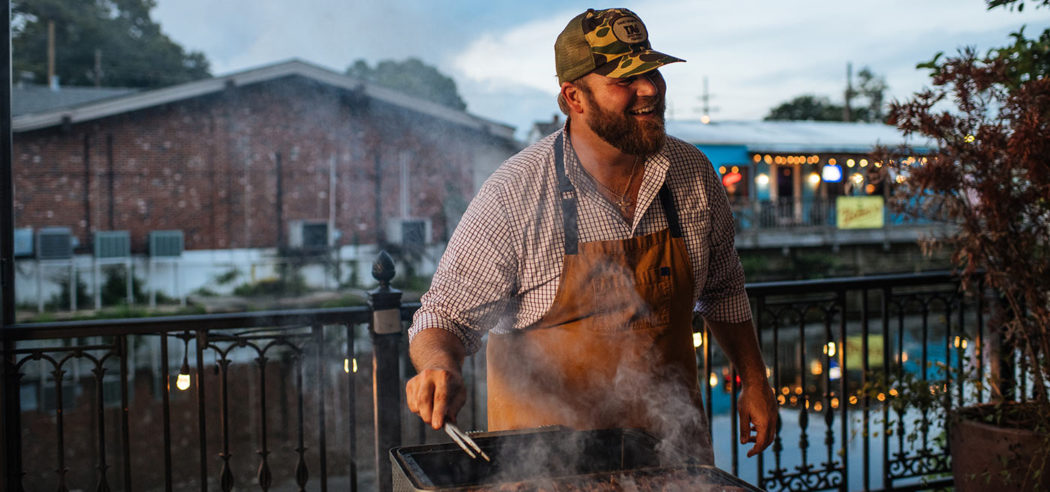Images by Denny Culbert www.dennyculbert.com
Almost like another country—or it can feel that way once you step into the saturated culture that is Louisiana. Tradition, a haunted look of a bayou, the unmistakable food and atmosphere that feels like a vibration. For chef Jean-Paul Bourgeois, his cooking style aims to honor all of that. A few days before Hurricane Ida swept over Louisiana, JPB put on a dockside dinner party with the help of Snake River Farms, with his backyard serving as the inspiration. Very sadly, the dockside establishment pictured below was severely damaged a few days later due to the storm. And while Jean-paul has been busy helping out his neighbors and friends, he was kind enough to take a little time to walk us through the evening.
If you would like to help aid in relief efforts, this link could be of service.
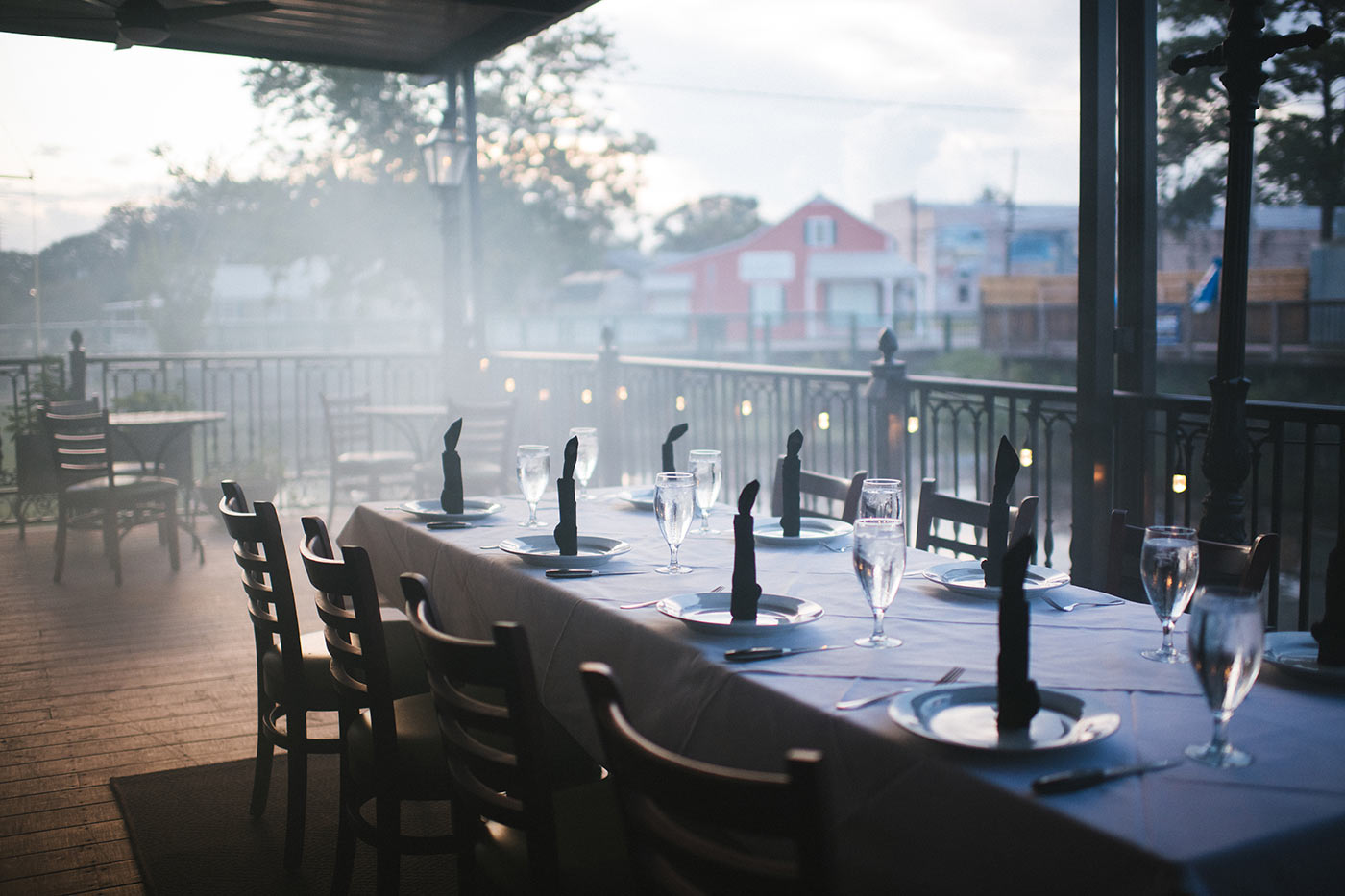
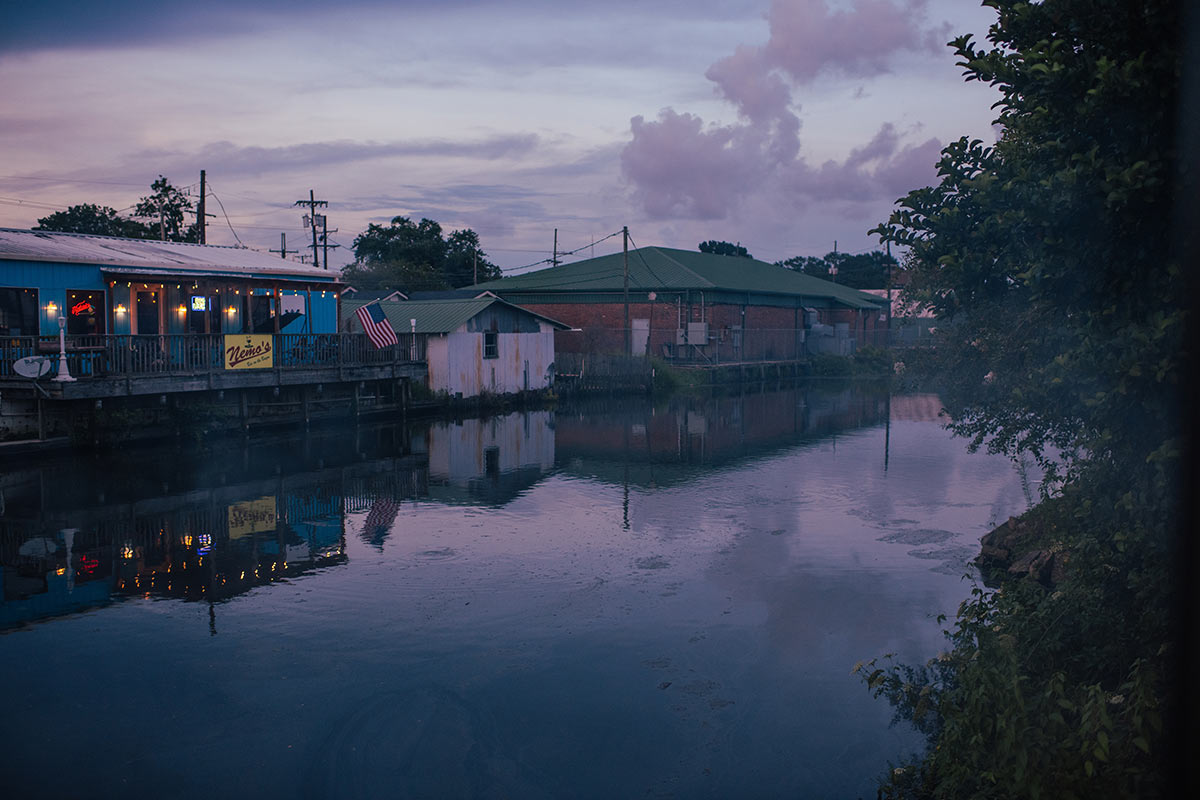
Whalebone: Describe Louisiana for anyone that might not have had the chance to have visited
Jean-Paul Bourgeois: I often tell my wife that you have to really love Louisiana to live here. And even prior to this storm, I would’ve said that. It’s even more true after this storm because Louisiana deals with a lot of stuff. Whether it’s storms like this or natural disasters, it’s not great infrastructure and roadways and stuff like that. So Louisiana has the ability to throw a lot of things at you, and for you to become a lifer, for you to become a Louisianian, you have to be resilient through all those things and look past them in some ways and see the beauty. You pay for that in blood, sweat, and tears for the beauty of Louisiana.
That harshness has a beauty that is unlike anywhere else in the country.
You see it in the swamps in the marshes of south Louisiana, through the dense fog that rises from those warm waters, and through the droopy Spanish moss hanging off of cypress trees and oak trees. It just has a quality to it that, just by looking at it, makes you respect it. That harshness has a beauty that is unlike anywhere else in the country.
I’m actually looking out into the destruction of my neighborhood as I speak on this. When you come here there’s going to be some ugly parts and there’s going to be some beautiful parts, but one thing you can count on is the people being strong, resilient, faithful, loyal, community-driven.
WB: What would you consider the magic of the bayou is?
JPB: We have a little saying in south Louisiana, which we call the swamp floor pantry, and what we consider that is all the things that come out of south Louisiana. The things that come out of the bayou; the different freshwater fish species, the big alligator snapping turtles, the ducks and the geese that migrate to the south, the crawfish, the shrimp, the crabs that exist in saltwater Louisiana. Those are all things that we call the swamp floor pantry.
The bayou is a still or slow-moving body of water that’s smaller than a river. It’s similar to a river but smaller and slower-moving, and so when you look at it from the surface or from eye level, it looks calm, it looks placid, it looks like there’s an ease to it.
But underneath that surface, it’s dark and murky and full of alligators, alligator snapping turtles, and snakes. And so it’s an ecosystem that despite its sight of being a slow and kind of creepy little body of water, is a vibrant habitat of species that we live off of.
I was telling this to my buddy the other day because we have all these generators that run our houses [in case of a storm]. The biggest concern for most people is, “All right, can I keep my fridge and my freezer cold? And the reason why is because all those folks in south Louisiana who are hunting ducks, or catching fish, or trapping crabs, or catching alligators, they’re filling their freezer with all that stuff from the swamp floor pantry. Louisianans need to protect all that game and fish and all the little critters we’ve caught over the last season in our freezer because that’s what we use to feed our family. To me, that’s the magic of the bayou, as you say.
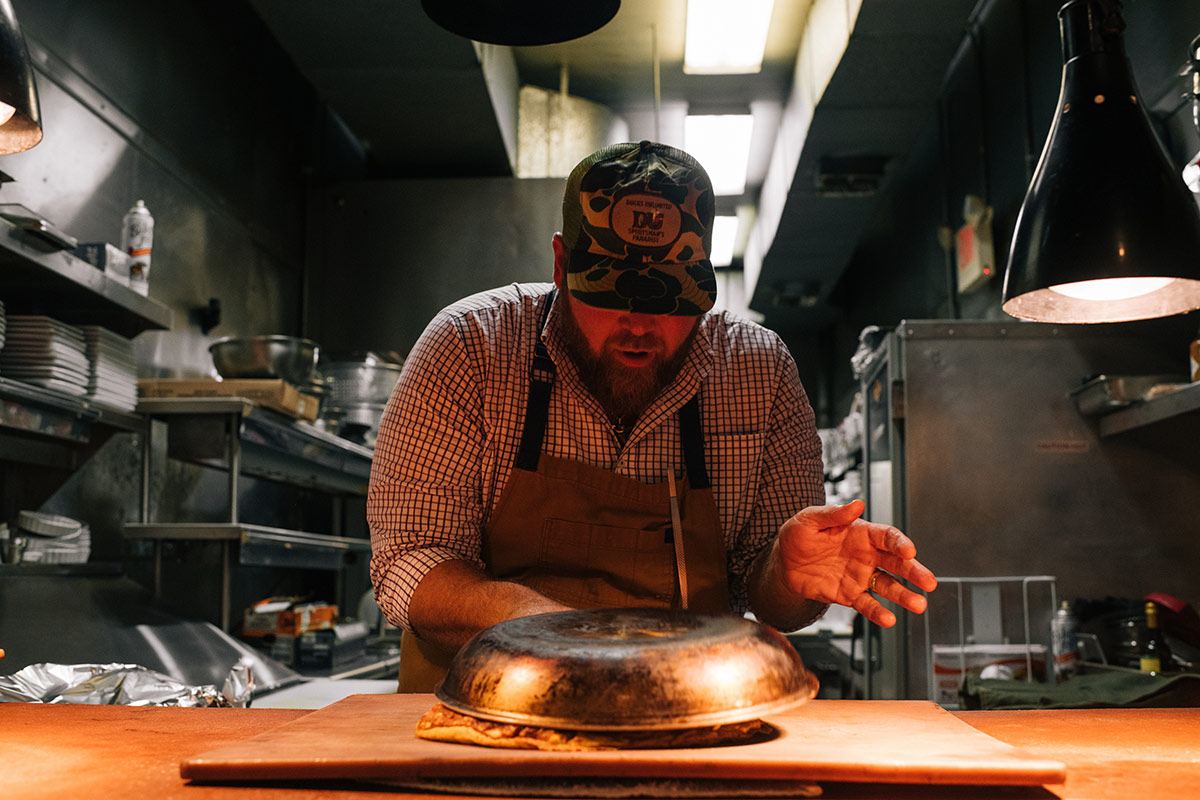
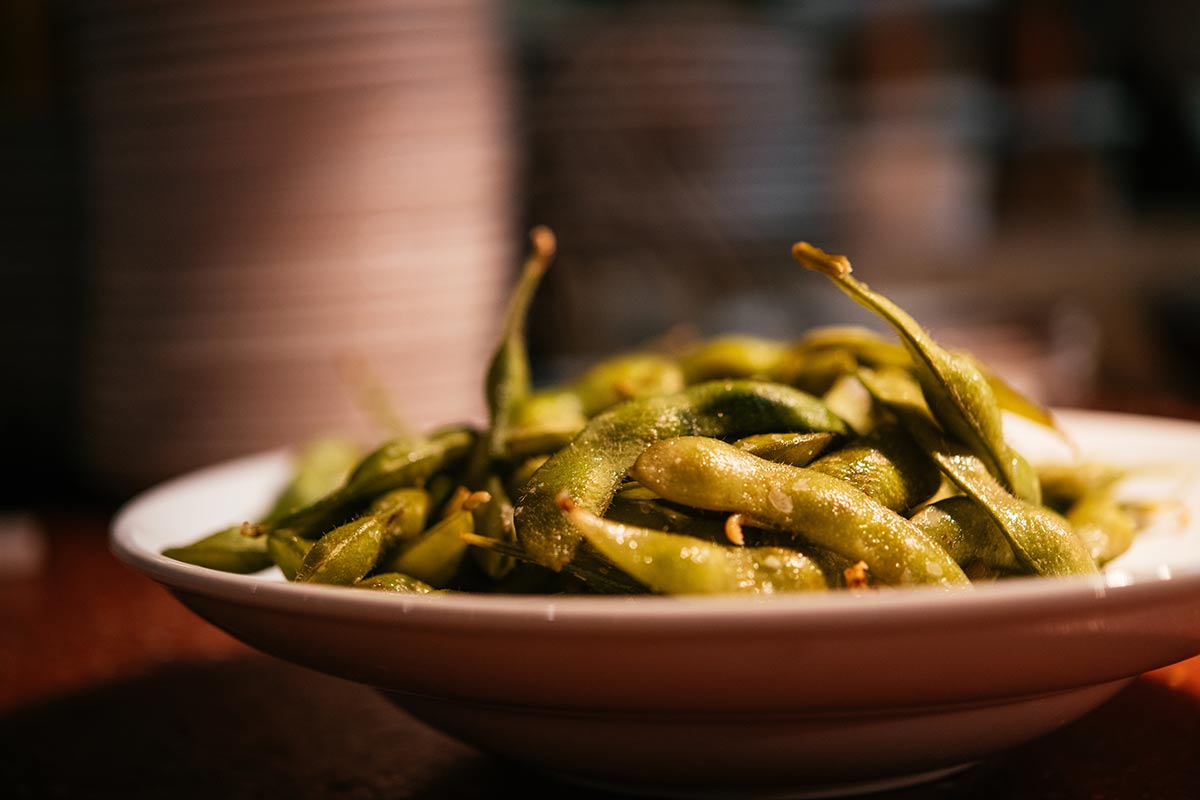
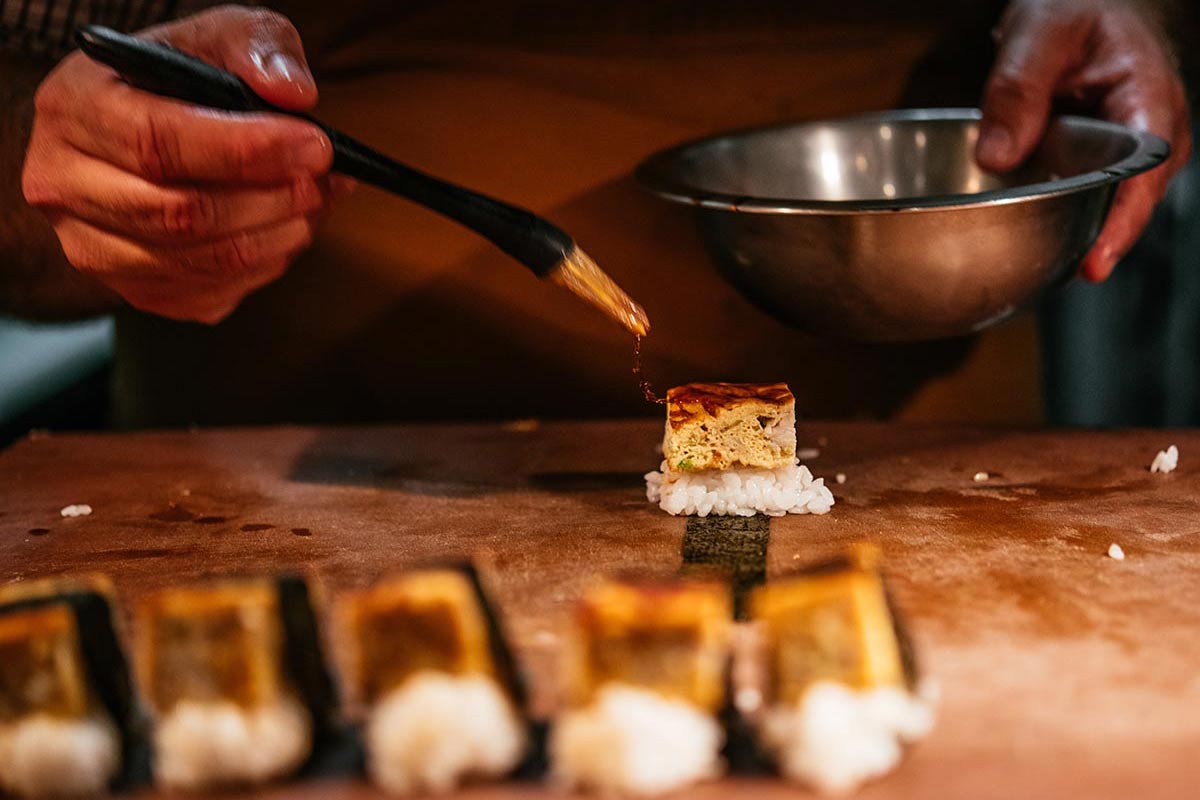
WB: What’s one quality in ingredients that you look for that Snake River Farms possesses?
JPB: Well, it’s obvious at the minute you look inside the package, not just to me, but to any cook in America. You’re going to find excessive and vibrant marbling throughout that meat. And anyone who knows beef is going to tell you that that is the main thing to look at, whether you’re looking in your grocery store meat aisle, or you’re looking at it online or whatever. Search for that marble. How intricate is that spider web of that intramuscular tissue?
And it’s obvious from the first time you could cut that packet open, almost any Snake River Farm beef that I’ve ever worked with has more marbling than any beef that I’ve ever come across. And that’s not just a plug, that’s the truth, in my opinion. It doesn’t matter whether you have the flank steak or the skirt steak or you’re cooking tomahawk rib-eyes. Even their beef hot dogs are fantastic. It always feels a little more special with Snake River Farms, especially when you feed it to someone who’s never had it. And I think that’s what’s kind of really remarkable about Snake River Farms is that you don’t need a trained palate or eye, it’s undeniable to anyone.
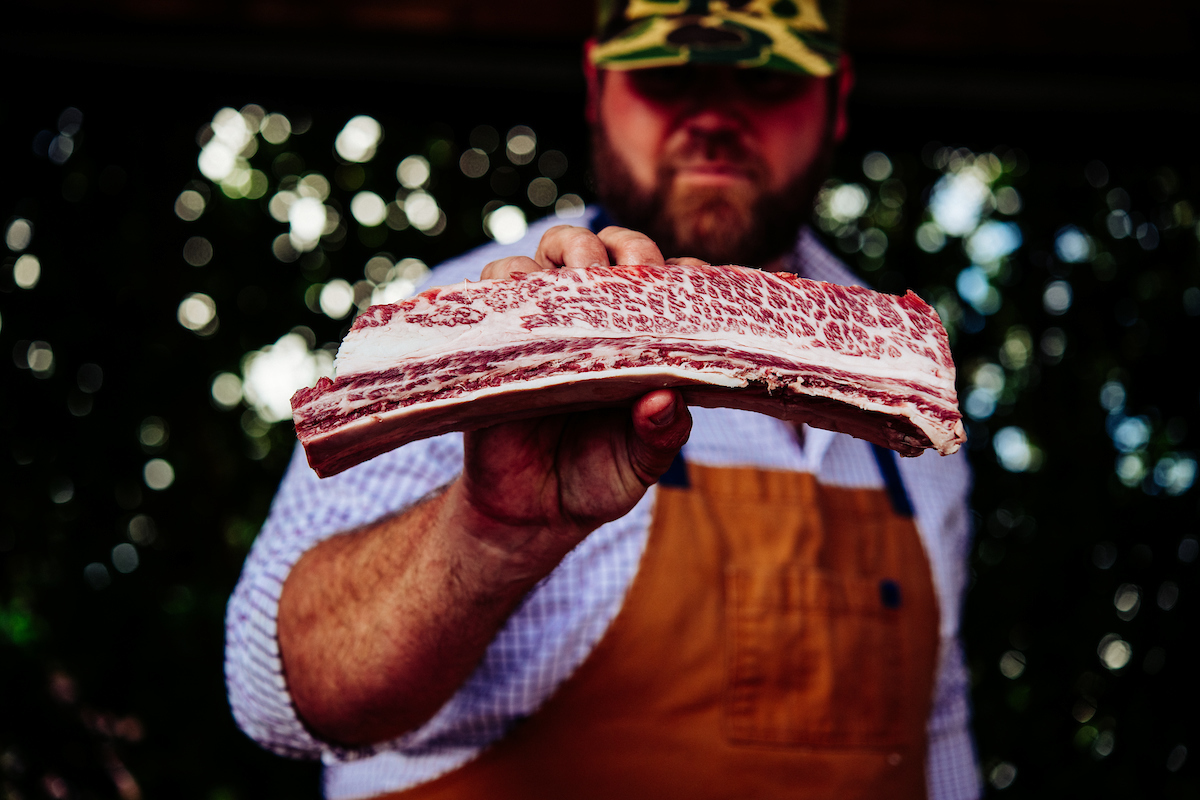
The Full Menu:
Table snacks:
- Sake steamed edamame
- Blue crab omelette nigiri
Main and sides:
- Grilled sake marinated Snake River farm short rib
- Roasted wild mushrooms cooked in sake scallion sauce
Dessert:
- Doberge birthday Cake
WB: For this menu, what was the sentiment you wanted this dinner to convey?
JPB: Well, it was a birthday party and it was a celebration. I wanted to pull out the stops, so at first, we’re like, “Okay, we’re going to be using some Snake River Farms beef. We’re going to use great ingredients.” So it already sounded like a great opportunity to celebrate somebody’s another year around the sun.
Whenever we cook, it doesn’t matter if it’s a Wednesday night after school or if it’s somebody’s birthday dinner or wedding rehearsal, to me it is a celebratory moment to gather around a table and share a meal with someone. And it could be hot dogs and canned corn for all I care, if you’re even sharing that meal with people that you love, that’s a reason to celebrate. You don’t even need the best ingredients if you put love into it and you cook with that love, that emotes to the people that you’re eating with. So I think that was the sentiment of every meal, but especially this last one.
WB: What’s an ingredient that you love working with that you love to surprise people with?
JPB: Oh, I love this question. It’s a great question. My little secret ingredient that I use for a lot—I guess it’s not a secret anymore—is fermented crab paste.
You see it a lot in Southeast Asian cooking, different noodle dishes, sauces, curries, and so on. But I made a low country kind of Carolina-style shrimp and grits, added just a little tip of a spoon of fermented crab paste into my gravy. Made a great seafood gumbo from fresh Louisiana crabs, fresh Louisiana shrimp, fresh Louisiana oysters, and a tablespoon of fermented crab paste into that gumbo just gives it a different level and a different kind of element of seafood that you can’t get out of it being fresh. And so whether it’s stir-fried vegetables or noodles or different Cajun dishes or other Southern dishes, even savory type baked goods. We have a little thing called crackling cornbread, and so we may render fatback or other hog into it and just a little tip of a spoon of that fermented crab paste in there. It won’t taste crabby. It won’t taste seafood-y, but it gives this wonderful element of kind of funk—a good kind of funk—to the dish.
WB: What drew you to using Wetland’s Sake? Did you pair them? Or use as part of the recipe?
JPB: Yeah. So I used it… Wetlands Sake, I’d seen them at our local grocery store in Louisiana, and the name of the sake and the label kind of captured me. Because I’m a duck hunter because I’m a native south Louisianan, the wetlands are extremely important to me, and so that label, Wetlands Sake, really got my attention and got me doing a little research. And then as I dug a little further and further, I just fell in love with their story and what they’re trying to do, even if for a little bit, for the wetlands. There’s no one-size-fits-all band-aid for the wetland in south Louisiana, but every little bit helps, and every little bit that you can raise awareness for is good in my book.
And so I learned about the sake and wanted to really honor that ingredient, honor their story by cooking it at the birthday party in south Louisiana. I marinated the beef with a sake marinade. I then brushed that marinade over the short rib while it was cooking.
I made a crab omelet nigiri, which egg nigiri is nothing new to Japanese cuisine, but I took some fresh crab and I mixed it with a little sake and mayo into the eggs, whisked that up real good, and then I made a crab omelet like you would in a traditional egg nigiri style. So I used the sake in every bit of the dish, including the one without the beef.
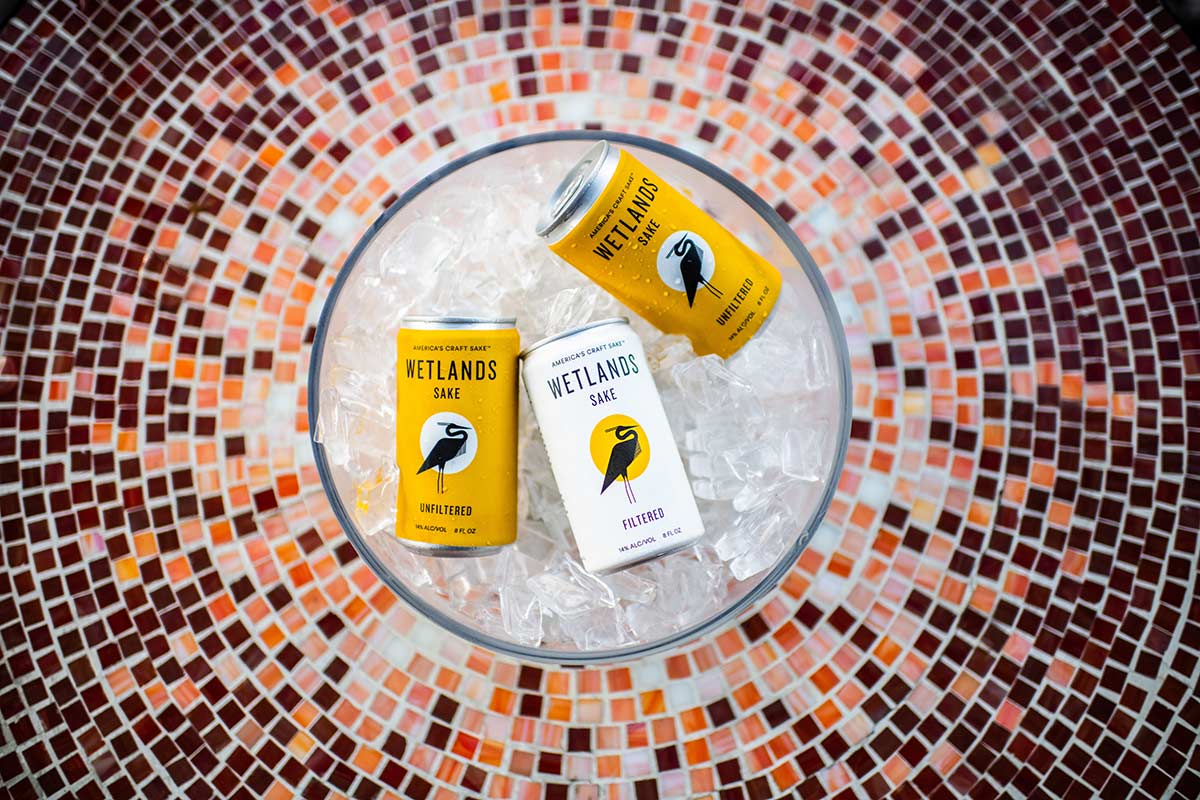
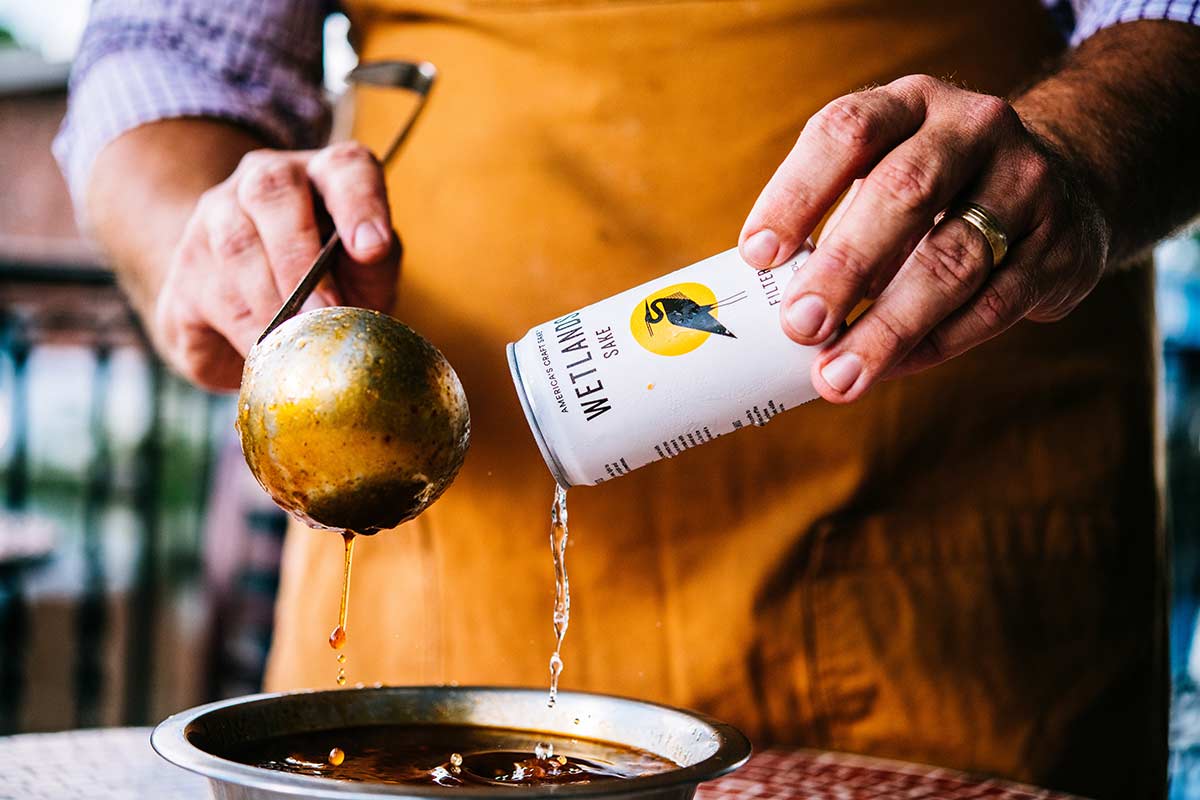
WB: How would you encourage others to put their own kind of unique spin on “classic” Louisiana fare? So like things that are available: crawfish, gumbos.
JPB: If somebody really wants to cook Asian food and they’re in the Pacific Northwest and all they have is Dungeness crab, then use Dungeness crab. If they want to make a fish Couvillion, which is typically a Cajun-style fish stew, then you don’t have what we use, fish or catfish, typically, they can go ahead and use the salmon in that Couvillion. And so to my point, if you can find fresh salmon and you really feel like you want to cook Cajun food, then find the right dish and use that fresh ingredient.
Andouille. The king of Cajun sausages. Obviously, I have my pick of the best andouille in the world in south Louisiana, but most people don’t have that. And so instead of going to the grocery store and buying some pre-packaged version that you know isn’t going to be the same, you likely have as good smoked sausage from another butcher somewhere. You don’t have to use andouille. It’s just smoked pork sausage. It has the qualities that make it andouille, but for the most part, you can sub out any sausage in its place. But just make sure you’re using the best ingredients that you can from wherever you’re pulling them from.
WB: How do you as a chef try to respect the ingredients you’re working with?
JPB: Most chefs have been trained to respect whatever ingredient they’re working with. It could be something as simple as chives. We’ll trim the chive tips to use in stock later on. So that doesn’t change, especially so when you’re using really quality ingredients. You want to make sure you are using every little bit of it that you can in whatever way that you can.
And so Louisianans do a great job at this—cooking whole animals or using every part of the animal to make certain delicacies of south Louisiana dishes. And so in a lot of ways, maybe that was just really imprinted on me from a young boy, just that idea of taking a whole hog.
Here’s really the thing that everybody should know—there’s a lot of hands that go into your food before you eat it in your kitchen. You want to honor all of that hard work, so eventually, when it gets to your cutting board so you can feed your family, you’ve also honored it and used every bit of it. All you can do as a chef is continue that lineage, that line of honoring that ingredient through that lifestyle, through that process.
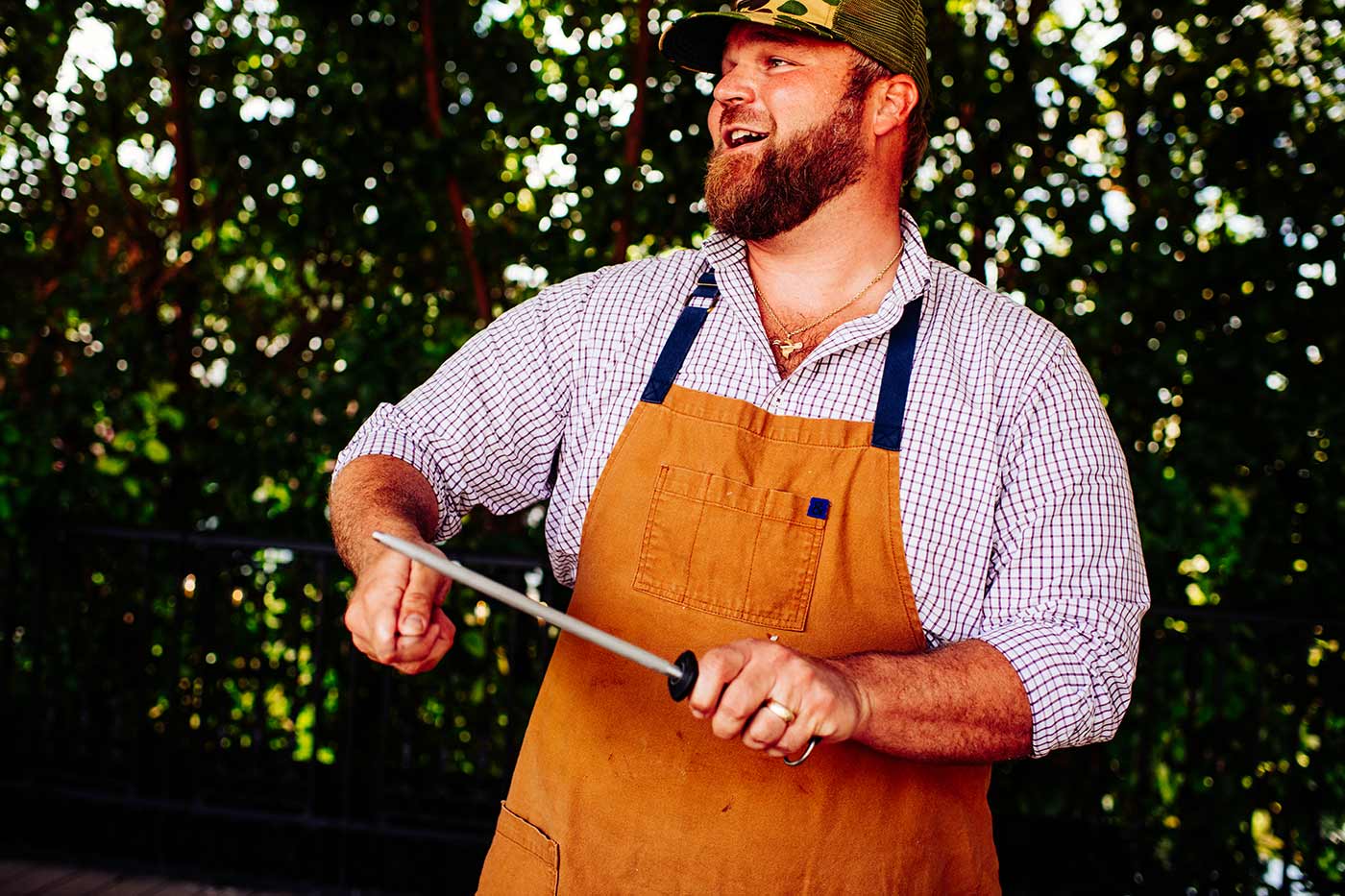
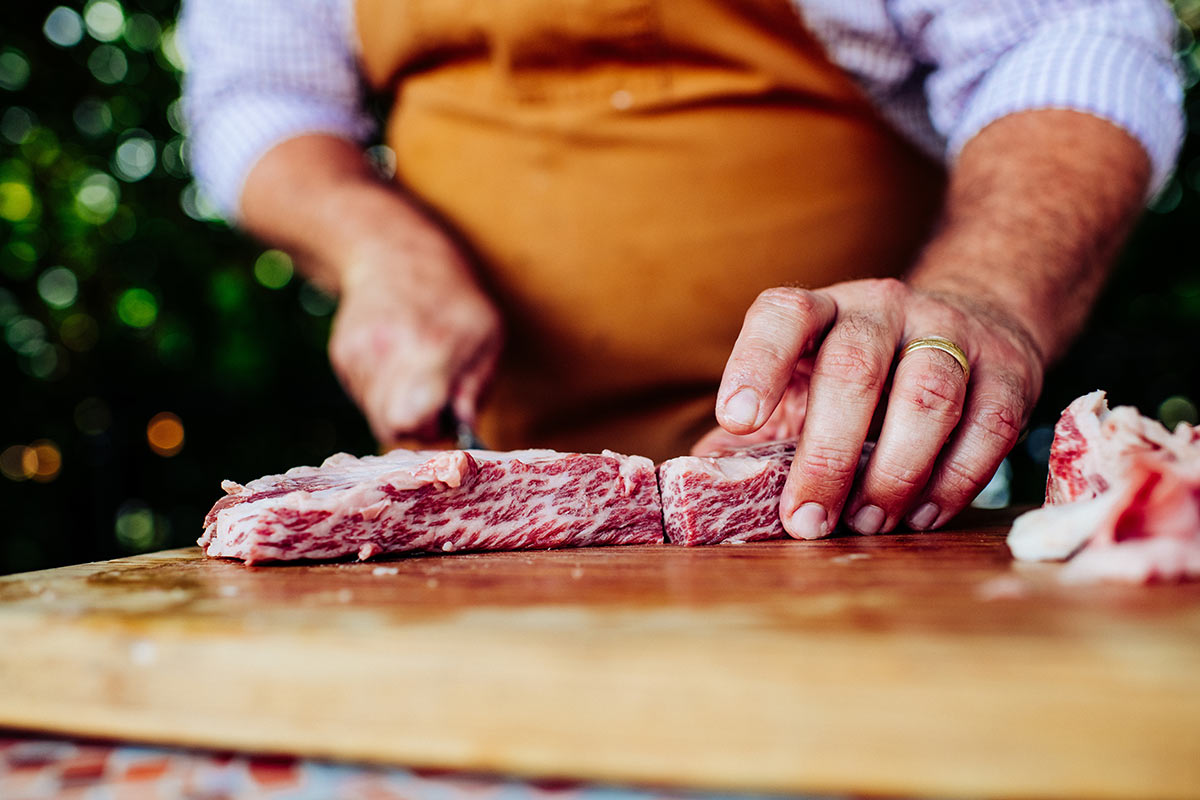
WB: What’s the feeling that you hope that everyone gets when you prepare a dish for them?
JPB: I look at my palate or anyone’s palate as the last true exploration in society. There’s no more discovering new land. There’s no more west to peel back. There’s no more Lewis and Clark and stuff like that. There’s not a lot of discovery and surprise left in society. Right? But in your palate, with tasting new things and eating new things, I feel like, for me, that’s my exploration. That’s my discovery.
And my goal when I cook is to make some think “Huh, never had that before or tasted that before, or tasted it that way before.” And I think that comes with honoring the food and preparing it with love from the heart, from the stove, really intentionally thinking about how you’re going to prepare it. That’s what cooking with love means. It’s giving it all the thought that it takes to make that ingredient as best as you can. And when you strike that perfect equation or that perfect chord, every now and then as a chef, you get lucky to see the expression on somebody’s face when they haven’t had something this good before or haven’t had something like this at all, or never tasted a flavor like this in their life, and the pleasure you get from exploring flavors and food through your palate—I feel like that’s the biggest gift that I can give to people as a chef as well.
But in your palate, with tasting new things and eating new things, I feel like, for me, that’s my exploration. That’s my discovery.
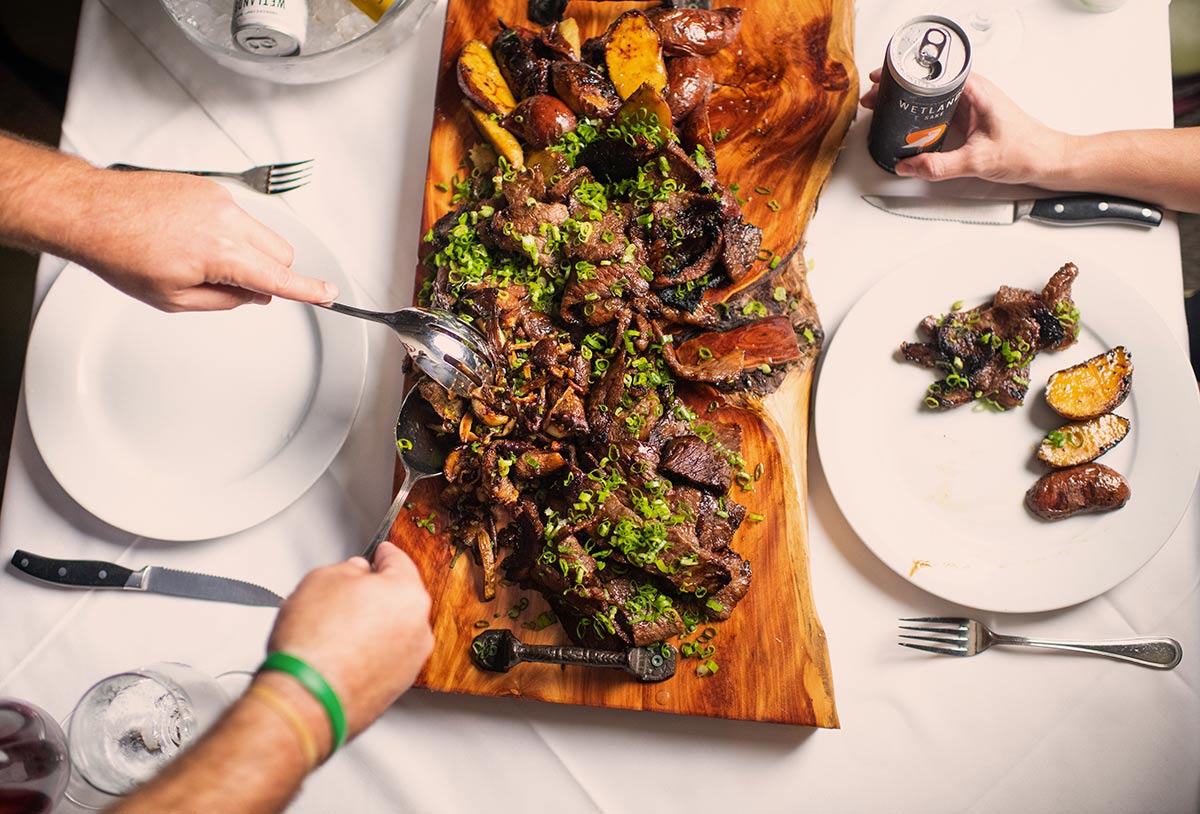
Short Rib Recipe by Chef Jean-Paul Bourgeois
Ingredients:
7lbs Snake River Farms American Wagyu Short Ribs
2 cups Wetlands unfiltered sake
2 cups of soy sauce
½ cup of fried onion paste
¼ cup of garlic paste
½ cup of rice wine vinegar
2 cups of dark brown sugar
¼ cup of sesame oil
¼ cup chili paste
1T ground black pepper
1T sea salt
1 large ginger root cut into rough slivers
Instructions
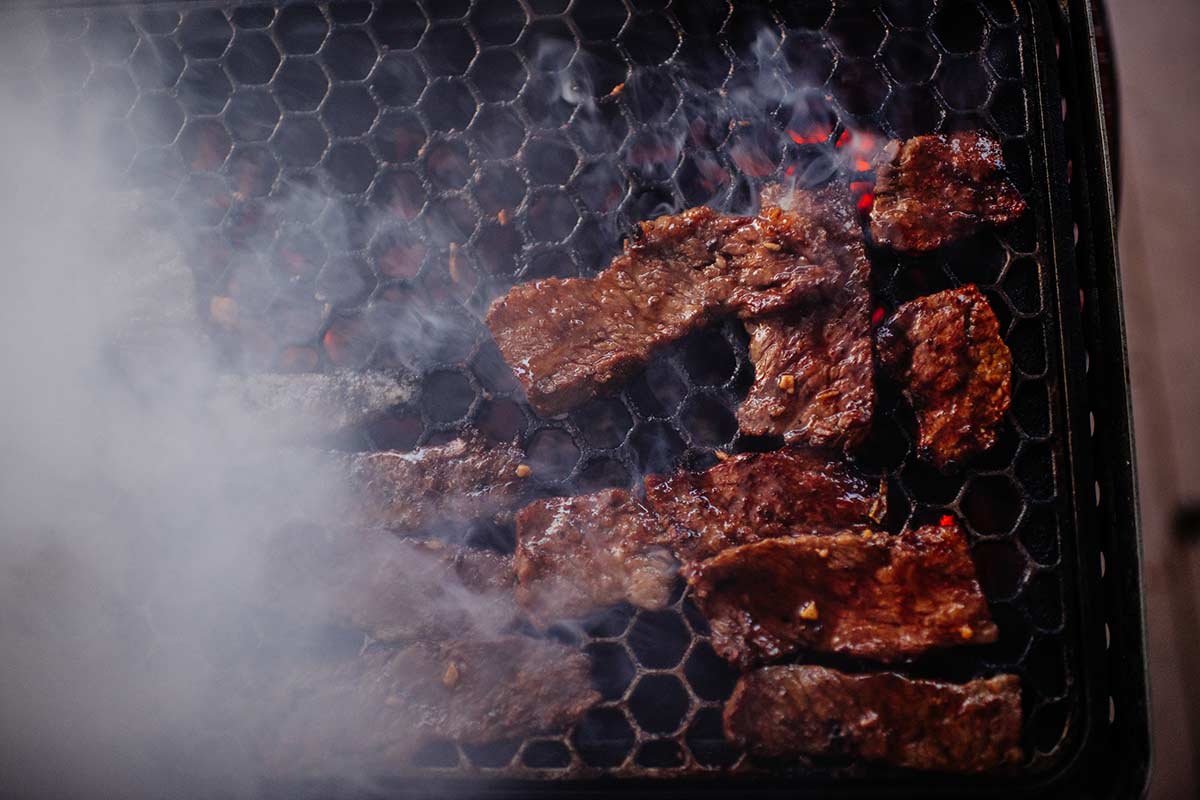
Mix all marinade ingredients until well incorporated and sugar is dissolved. Refrigerate overnight to allow flavors to come together.
An hour before grilling, marinate your short rib pieces in your pre-made marinate. Reserve 1 cup of marinade to brush on the pieces of meat being grilled.
Trim the entire roast cleaning it of all silver skin and unwanted fat. Separate the three short rib bones. Carefully remove the meat cap from the top side of the rib bone. You should have three separate boneless pieces of meat. Carefully trim each section of any unwanted fat or senue. Set aside all trimmings, fat, and bone for bone broth or other applications
Once all three short rib sections or cleaned, thinly slice the meat against the grains. No less than ⅛” and no thicker than ¼.”
Light your charcoal and make sure all of your embers are white since you want to grill this meat at as high a temperature as possible. Use a bit of SRF chef’s gold to oil your grill grates.
Quickly and carefully grill your short rib over the coals. Total grilling time is no more than two minutes on each side. Once you flip all pieces immediately brush each piece with reserved marinade and remove it off the grill.
Repeat this process until all pieces are grilled.
Short rib pieces will likely look “cooked through” and should have caramelized edges, be subtly smoked, and be tender rich, and juicy.

